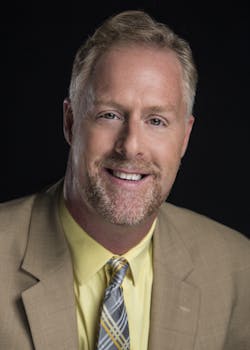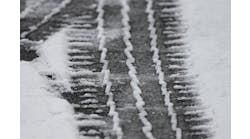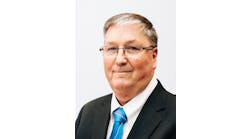With winter now upon us, Roads & Bridges spoke with Eric Hartmann, vice president of sales and marketing for Tovar Snow Professionals, about best practices for snow and ice control, the importance of off-season training, and more.
RB: Your firm has offices all over the country, so you face all forms of topography and weather types. How do you put together a winter management plan in advance of the season?
EH: Before the season starts, we overhaul our equipment by going through each piece of it top to bottom doing repairs and full winter prep. Tovar plans and prepares for the season by updating its training plans for the seasonal labor force. Each location has its own plan for growth and equipment additions to match new accounts that we plan to take on for the season. As sales finalize, we begin our process of allocating our assets to match each location’s service needs. Our basic plan is for all work to be completed on a four-hour cycle. This timeframe is important to be able to keep up during large snowfalls. Additionally, we allocate assets 10% over the estimates. This builds backup into the overall service plan, resulting in no downtime around breakdowns. Overall, we do service plans locally versus as an entire company to account for local differences in weather and expectations.
RB: What kind of training protocols do you employ and which would you recommend?
EH: The first thing about training is safety; keeping our people safe first, so they can work to keep the general public safe. We strive to get them thinking about safety first on their shift. We send safety reminders, tool box talks and signage. These are just some of the various ways to help safety be first and foremost.
Additionally, drivers are trained how to properly use their equipment and on the entire process. In the example of a salt truck, not just training with the truck, but also on loading it up with a loader, cleaning chunks off the grates, and all other functions that go into the overall process they go through in an event. Then we look for ways to make their job as safe as possible. Using the example of getting the chunks of salt off the grate, instead of the drivers climbing on the top of the trucks, we’ve installed stairs with railings at our salt depots that the drivers with a regular thatching rake can address the payload before going out on a route.
What’s more, for different temperatures you use different mixtures, different concentrations, and different application rates based on temperatures, moisture content, and so forth. The equipment needs to be calibrated correctly, and your crew needs to be trained on how to do it the right way. It should get done over the course of a summer.
Finally, since snow is seasonal, we train everyone again each winter. Even experienced operations need a refresher after not doing things for seven months. To be up to speed when the snow flies, everyone needs a refresher. New operations will get additional training over the experienced operations.
At Tovar, we hold three classroom training seminars. One specific to safety, another on liquids and deicers, and then each individual job type has its own specific training, from plow operators to truck drivers to the sidewalk crews. Then we have 3-5 mock runs, both day and night, using safety briefings with mock scenarios to test potential conditions. Everybody—regardless if they’re full-time or snow birds—goes through these mock runs.
RB: Could you speak to equipment maintenance and preservation best practices?
EH: Most equipment is not specifically built for snow and ice work; it’s for landscaping or digging or some other primary function, so my biggest recommendation here is to customize your equipment. For example, we employ frame-mounted V-boxes because you get a better spread pattern and they can be better calibrated. Another example is on a salt truck you’ve got metal wheel wells. Well, those are going to corrode, so we use plastic wheel wells for our salt trucks. If you customize the vehicle for snow only, and with a good maintenance program you’ll get 15 years out of it, as opposed to 3-5 years for a heavily multi-purpose truck. That is worth the investment.
Regarding maintenance, the main item we are trying to prevent is corrosion from the deicing chemicals. We start by sealing everything on the truck, from the cab on down, everything metal or plastic on the truck, before the season begins. We use a spray which makes it very easy and thorough. Then after every event we wash our trucks. We use a vinegar-water mix to combat the salt to prevent corrosion. And then we re-seal it. Wash and re-seal, wash and re-seal, after every event. We keep a separate crew for that, so the drivers can get some rest, especially if the event is persistent and ongoing.
RB: Since you’re a private contractor, you deal with all sorts of jobs, from residential to commercial. How do you set up a routing pattern for a public works-type roads job?
EH: When we’re doing geographic routing, we want to always maximize right turns. Additionally, we never want a driver to have to back up; a high percentage of accidents happen when backing up. With those items in mind, we set up each piece of equipment on the four-hour cycle time I mentioned. Identifying the product rate of different areas is key—including drive time in the production rates, and for salt trucks figure in time it takes to reload. Know your production rate. We use square footage, or lane miles if doing roads, and different rates for different types of equipment. The production rate for a 12-ft blade with a wing is different than a F-350 that’s doing some side streets. Again, put the proper assets in each respective area to maximize the production rate for each cycle to be the most effective.
Another consideration is outsourcing to supplement your own equipment. For example, hiring a sub-contractor with better utilized equipment for an area, allowing the assets you possess to focus on work better suited for the equipment.
One final part of routing is blizzard contingency planning. We plan for a storm that is 8 in. and above differently. We figure out what extra equipment we’d want. Then set up a plan on if we get that equipment in place, where is it going, and how will the other equipment need to be adjusted. I already have a pre-conceived plan in place. For example, I can have a sub-contractor set up to add to my crews, and rotate them in tandem with my crew, half in half off, to back up my operation.
--------------
Hartmann has been with Tovar for 17 years, and is a member of the APWA, BOMA, ICSC, NAIOP, SIMA and IFMA.


